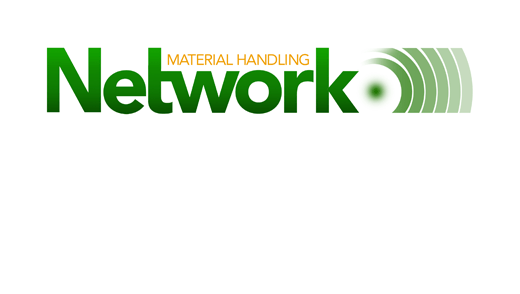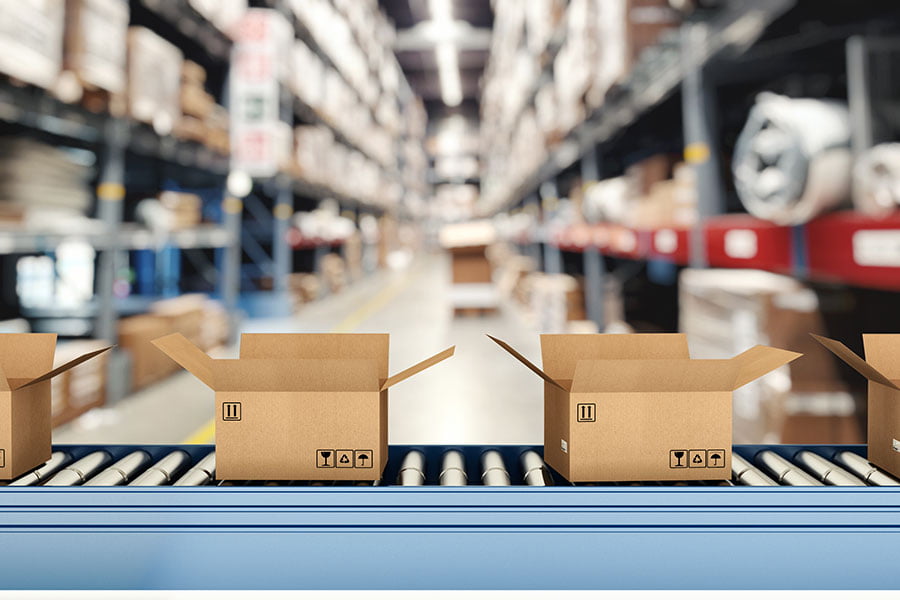Published January 16, 2019
A network of fulfillment centers that pushes inventory closer to the customer boosts sales
Liliana wanted gluten-free rigatoni, organic pasta sauce and free-range meatballs for her Saturday shindig.
On Thursday, she logged onto the Mama Eleonora All-Natural Pasta Conglomerate online fulfillment center, which – without access to a distributed logistics network – offered delivery by Monday. Or overnight for an additional $25.
Ugh.
Despite the wonderful memories of the Mama Eleonora Visitors’ Expo from her Napa Valley vacation, Liliana had a deadline. Aborting her shopping cart, she finds The Venetian Pasta Co. on Google and orders her tasty tidbits. Because of her searches about all things Italian, a retargeting ad led her to Parties by Theresa. Lured in by pictures of the Italian flag and revolutionary Giuseppe Garibaldi, Liliana clicks on green, white and red bunting, an Italian flag to hang on her New York apartment door, a handful of Italian flags on 6-inch sticks to decorate the table and historic Italian placemats – including one with the visage of Garibaldi.
Venetian Pasta Co. and Parties by Theresa have deployed a distributed logistics network via MonarchFx. So Liliana gets the whole kit and caboodle Saturday. The party is a smash. And Liliana tells her seven friends about the awfulness of Mama Eleonora – a distinct downer considering the charming brand managers she met at the lush Napa Valley locale.
Oh, and she posts the story, pictures and recipes to her hundreds of followers on Facebook, Twitter, Instagram and Pinterest.
Such episodes repeat millions of times a day. Liliana’s tale is the struggle sellers face in the changing world of retail, where consumers flit between store and internet before buying, or they gaggle at products online before picking one up at the mall. They don’t differentiate between stores and online – bricks and clicks. At any bottleneck – slow delivery or shipping charges – they abandon the retailer or brand.
In this new landscape, ideally, your brand’s production site would reside in your customer’s living room (or kitchen, say, if you make refrigerators).
That, of course, is not reality. But distributed logistics, where a network of forward stocking points pushes inventory closer to the customer, just waiting for the pull of an online click for your brand to fulfill customer desires, will be the next best thing. Forward-deployed inventory gives your enterprise a more affordable delivery time from order to receipt – an integral business strategy that, as Amazon has proved, drives growth.
Other enterprises have correlated faster delivery with increased sales. One brand saw sales skyrocket 15 percent the first six months after adding same-day delivery from stores.
The future will see more of the same.
In fact, a recent white paper from Tompkins International reveals that closer inventory proximity could increase sales from a low of 6-10% to a high of 10-15% over the next three years. “Achieving Revenue Gains from Distributed Logistics” makes this connection via surveys, analyses, judgment and experience, showing that supply chain decision-making criteria must transform.
Maybe, in the future, you can deliver Liliana’s pasta party supplies and stay on her (and her friends’) good side. After all, according to a report from Dotcom Distribution, 87% of online shoppers say eCommerce delivery time influences their decision to buy again.
And distributed logistics can benefit brick-style retail stores. Rapid replenishment keeps site inventory lean, reducing the $100-per-square-foot footprint in favor of $15-per-square-foot fulfillment centers (FCs).
Thus is the reality wrought by eCommerce.
For years, the science of inventory, consolidation, economic order quantity, total relevant cost and other tools ruled supply chains. These instruments implemented a system with distribution centers (DCs) 500,000 square feet and larger (Target’s in Lacey, Washington, is a whopping two million square feet.) It’s a great system for minimizing operational expenses, facility costs, transportation spending, total holding and ordering costs.
But over the past two decades, Amazon has built a nationwide distributed logistics network of larger DCs that feed dozens of smaller FCs. These FCs, closer to high-density urban areas, let Amazon deliver to the customer faster and cheaper, driving return sales. Non-believers should check Amazon’s stock price over the last 20 years.
Its strategy has turned supply chain management, long the province of consolidators, on its head.
After all, what if you want to ship a pair of Nikes from say, Everett, Washington, to South Carolina in two days? Oops – the old consolidated model requires expensive air mail. Meanwhile, your material handling team has to simultaneously replenish stores with pallets and cartons while pulling three items – “eaches” in the new supply chain language – to put in a box and deliver to your online customer.
That, unfortunately for the dinosaurs of logistics, is the new world of retail and branding. Liliana and other customers want those plush toys, Adidas, charcoal face masks, smartwatches and drones in two days. Facing delays, stock-outs and shipping charges, customers bolt to your competitors.
Enter distributed logistics.
A North American network can be as simple as a second DC on the other coast. A company with one site in Chino, California, can benefit from a DC in New Jersey. Regional competitors can operate a large DC that feeds a handful of smaller FCs. Both networks allow you to push inventory closer to your urban population densities, shortening delivery times. Engineering two-day fulfillment across a truly national or continental network might take years and include dozens of DCs feeding greater numbers of smaller FCs.
Like all logistics solutions, your enterprise can build this distributed logistics network, outsource it or take a hybrid approach. A truly national strategy likely will require a hybrid. Outside of the largest entities – the Walmarts, Home Depots, etc., worth hundreds of billions of dollars – no one enterprise has the capital or operational expertise to build, from the ground up, such a network.
And beyond capital costs are the traditional supply chain operational concerns: Will the brand pile up too much inventory at certain sites, requiring discounts to clear the network’s channels? Will the retailer stock too low and lose sales?
But unlike supply chains of yore, today’s logistics specialists have better forecasting tools and flow models. Demand planning, real-time data, even machine learning and artificial intelligence put the right stock at the right place at the right time. And within the FC, better technology, better systems and better automation moves that inventory more accurately than the human hands of yesteryear.
MonarchFx and its partners are building such a network, one that already delivers to 95% of the U.S. population in two days, a metric that will rise to 100% in a couple of years.
Unfortunately, the need to keep adding to your distributed logistics network will continue. As others catch up, Amazon will move the goalposts. Already, the online behemoth offers one-day and same-day shipping in several metro areas. MonarchFx is moving to match, already delivering next-day to 53% of the U.S. population, a figure that in a few short years will reach 87%. Same-day availability, which now covers 9% of the U.S., will cover 21%, helping you and MonarchFx keep up with the competition.
All this activity is driving eCommerce fulfillment times down. In 2017, average delivery from online click to the “brick” of the consumer’s domicile took about 4.5 days, dropping to 3.5 days in 2018, likely falling soon to 2.5 days.
While this creeping normality complicates things for supply chain specialists worldwide, it does have advantages.
First, closeness equals inexpensive when it comes to deliveries. No matter what kind of discount you get on air shipping, delivering via truck from New Jersey to New York will always be cheaper than flying something – say, organic pasta for Liliana – across country from the Napa Valley. Coupling lower shipping prices with inventory proximity also makes it easier to deliver next-day or same-day, whether the pull signal comes from a customer or retail store.
Moreover, that pull signal allows your entire supply chain to decide stocking requirements based on demand flow instead of amassing huge inventories of safety stock. Your system can rapidly increase or decrease delivery volume to replenish stores or fulfill consumer desires.
Altogether, the distributed logistics system offers higher levels of customer satisfaction, an important step that Amazon has mined to skyrocket its sales. Quicker and more affordable delivery equals happy customers equals customer satisfaction equals increased sales. As we saw with Liliana, the $600,000 Mama Eleanor spent on its Napa Valley branding center, pulling in well-to-do wine enthusiasts for samples, cooking classes and demonstrations, worked – up until the time of (non)delivery. With distributed logistics, Mama Eleanor could have earned Liliana’s brand loyalty, lowered customer churn and added the opportunity of selling her different, and maybe higher priced, products in the future.
Without competitive service and delivery options, the Lilianas of the world will look for the same or similar product elsewhere. The personalized experience brands desperately want consumers to covet evaporates into the ether. As we see from the reality of Liliana’s day-to-day world, she and other customers also need efficient delivery. And that’s where Mama Eleanora’s supply chain strategy failed.
Don’t make the same mistake.



